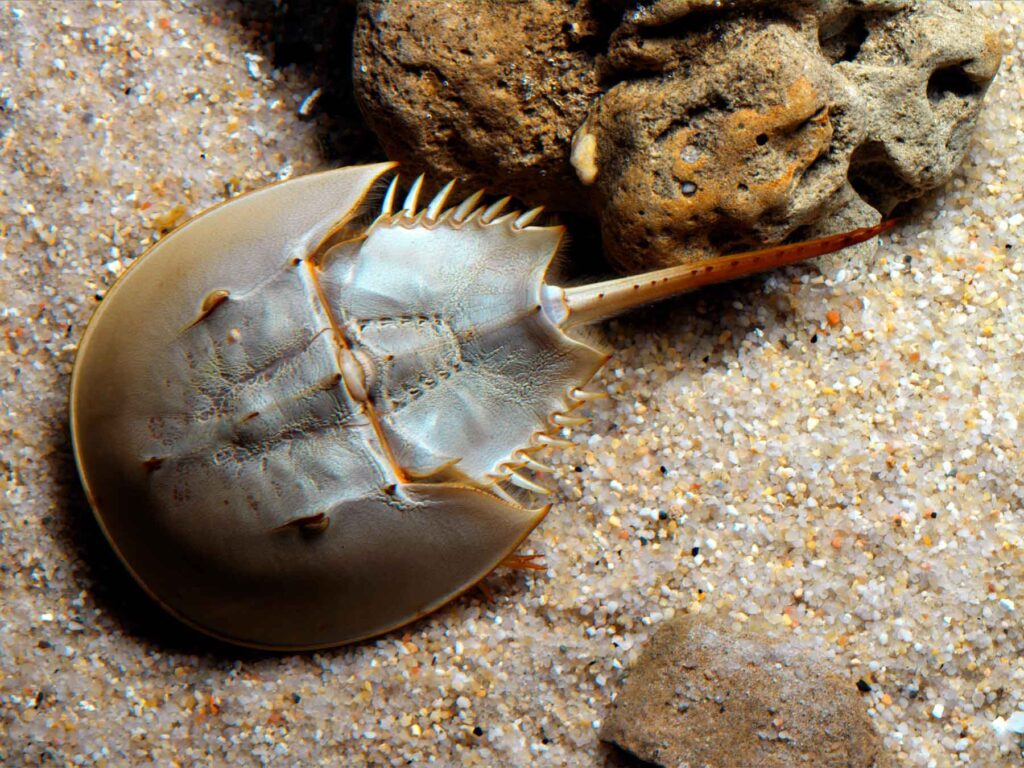
American horseshoe crab
Limulus polyphemus
Maximum length

1 m
feeding

Carnivore
activity

Diurnal
The American horseshoe crab is an arthropod that is characterized for having a long moving spine at the end of its body. It is considered a living fossil that has remained unaltered for 300 million years. Although it is a crab, it is closer to spiders than crustaceans. Its maximum size is 1 m.
They are species of the coast, diggers, which live on silt and sand beds, generally at depths of between 3 and 9 meters. It swims upside down, head downwards, and uses its moving spine to turn when it wants to walk on the bed.
They are predators that feeds on annelids and other mollusks, which they discover by digging in the sand. They eat them whole and then regurgitate the shells and other hard undisgestable parts. They can also eat seaweed.
When the times comes for reproduction they approach the beaches, where a large number of individuals gather. For mating, the male mounts the female, holding on to her back with the nails of its first pair of legs. The female digs a hole in the sand and lays between 200 and 300 eggs, which the male immediately irrigates with his sperm.
Interesting facts
Its blood is blue and possesses extraordinary immunological properties of interest to the biomedical industry.
Distributions
Conservation status
